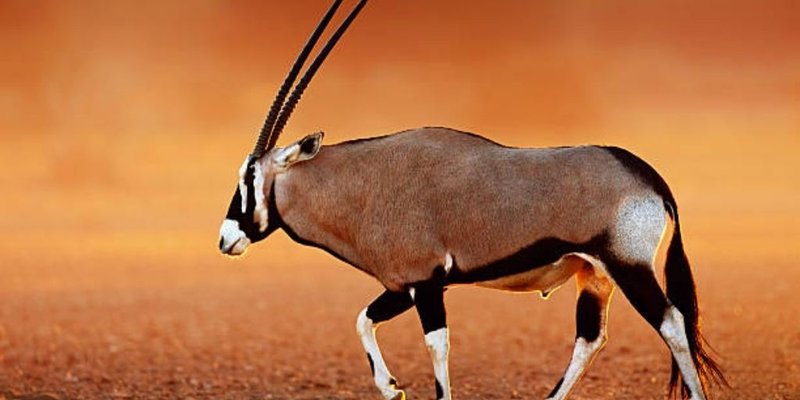
Imagine the oryx as a gardener of the savanna. Through its grazing habits, it influences plant growth and even shapes the landscapes it inhabits. Don’t you love how nature works in harmony? Each animal and plant has a role to play, and the oryx is one of those unsung heroes that keeps everything running smoothly. Let’s dive deeper into how this magnificent creature contributes to its ecosystem.
What is an Oryx?
To really appreciate the oryx’s role in its ecosystem, you need to know a bit about what it is. Oryxes are large antelopes known for their stunning, long, straight horns and striking coat patterns. The most common species include the Gemsbok and the Arabian oryx. Gemsboks are usually found in southern Africa, while Arabian oryxes inhabit deserts in the Middle East. It’s fascinating how these animals have adapted to their environments, managing to thrive in incredibly harsh conditions.
Physical Adaptations: One of the oryx’s most remarkable features is its ability to survive with very little water. They can go long stretches—up to several weeks—without drinking. Instead, they get moisture from the plants they eat. This makes them well-suited for arid regions. Their light-colored coats also reflect sunlight, helping them stay cool in hot climates. So, when you see an oryx, know that it’s not just a pretty face—it’s a master of survival.
The Oryx and Plant Life
The oryx plays a crucial role in maintaining healthy plant life in its ecosystem. By grazing on grasses, shrubs, and other vegetation, they help control plant growth. It’s kind of like how we trim our gardens to keep them neat and flourishing. Without oryxes, certain plants might dominate the landscape, pushing other species out and leading to less biodiversity.
Seed Dispersal: Here’s a cool fact: as oryxes munch on plants, they also help disperse seeds. Some plants need to pass through the digestive system of animals to germinate. When oryxes eat these plants and later excrete the seeds, they promote new growth far from the parent plant. This is key for maintaining healthy ecosystems, helping plants spread and thrive in different areas.
The Balance of Grazing
You might be wondering why grazing is so vital. Too much grazing can lead to overgrazing, which damages the land. This is why the oryx’s grazing habits are significant; they know when to move on, allowing vegetation to recover. It’s all about balance.
In the absence of oryxes, overgrazing could become a problem, resulting in soil erosion and less available food for other animals. Therefore, the oryx is not just eating; it’s actively participating in a cycle that supports various life forms in its habitat.
The Oryx and Other Wildlife
Every species interacts within its ecosystem, and the oryx is no exception. Other animals depend on oryxes in a variety of ways. For example, predators like lions and hyenas hunt oryxes, helping to regulate their population. This predator-prey relationship is essential for maintaining ecological balance.
As Prey: When oryxes thrive, their health indicates a robust ecosystem. If predator numbers rise or fall, it can signal changes in the environment. This dynamic means oryxes contribute to the health of both their species and those that depend on them.
Additionally, when oryxes forage through vegetation, they create pathways for smaller animals. These paths make it easier for other wildlife to navigate the often-thorny landscapes they inhabit. It’s like how we create trails while hiking—making it simpler for others to follow along.
Habitat and Environmental Impact
Oryxes often call arid and semi-arid regions home, primarily found in deserts and savannas. Their presence is a testament to the health of these ecosystems. Healthy populations of oryxes indicate that their habitats are thriving, which is vital for the survival of many other species.
Unfortunately, these habitats are under threat due to human activities. Overgrazing by livestock, habitat loss, and climate change can push oryx populations down. If oryx numbers decline, the entire ecosystem can feel the impact, leading to a ripple effect throughout their environment.
Conservation Efforts: Thankfully, there are several conservation programs aimed at protecting oryx populations, especially the endangered Arabian oryx. These initiatives help to restore habitats and ensure that both oryx and the ecosystems they support can continue to flourish.
Oryx and Climate Resilience
Interestingly, oryxes also play a role in climate resilience. Their ability to thrive in extreme conditions offers insights into how other species might adapt to changing climates. Observing how they interact with their environment can help conservationists develop strategies to protect other animals facing similar challenges.
The Cultural Significance of the Oryx
Beyond their ecological importance, oryxes hold cultural significance in various regions. In some cultures, they symbolize grace, strength, and resilience. They are often featured in local folklore, art, and national emblems, showcasing the bond between people and this fascinating animal.
Inspiration for Conservation: By celebrating oryxes in cultural narratives, communities can rally around conservation efforts. It’s a reminder that every creature, no matter how overlooked, contributes to the larger story of our planet.
Tourism and Economic Impact
Oryxes also attract eco-tourism, which can benefit local economies. Wildlife enthusiasts travel to see these magnificent creatures in their natural habitats, providing jobs and resources for communities. This boosts awareness of the need to protect natural spaces, helping ensure these animals—and the ecosystems they support—remain healthy for future generations.
The oryx is more than just a captivating antelope; it’s a cornerstone of its ecosystem. Through grazing, seed dispersal, and interactions with other wildlife, it plays a key role in maintaining balance and health in its environment. As we appreciate the beauty of the oryx, we should also recognize its importance in the delicate web of life.
Conservation efforts are essential to ensure this remarkable species continues to thrive. By protecting oryxes and their habitats, we’re taking steps to support the entire ecosystem they help nurture. So next time you think about the wilderness, remember the oryx—an unsung hero quietly holding nature together.
